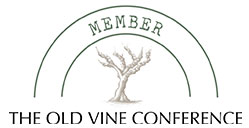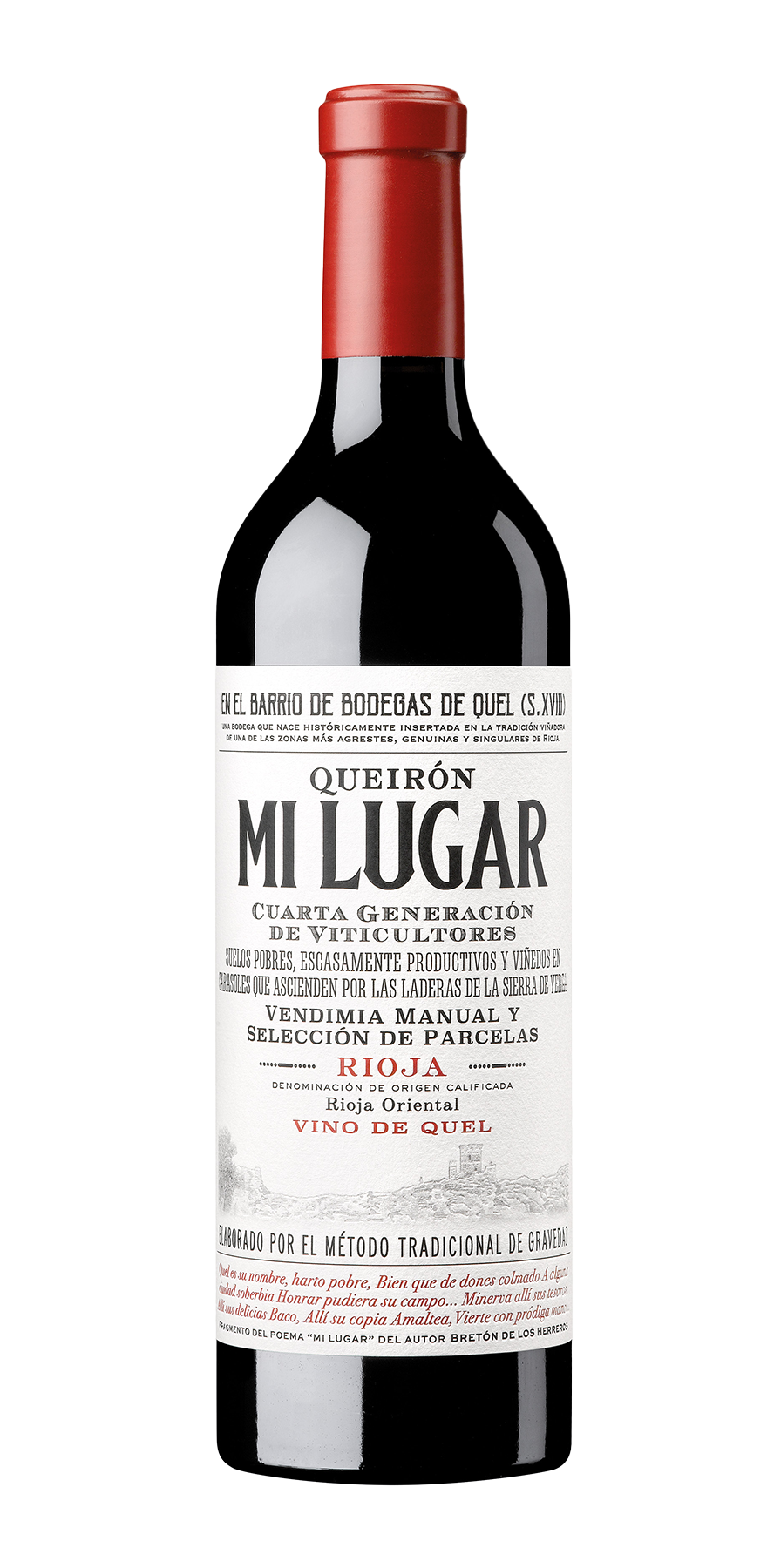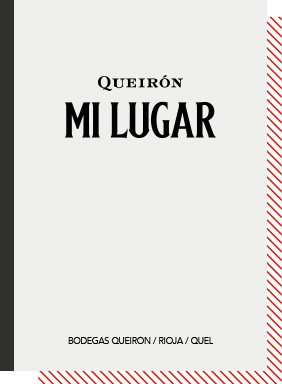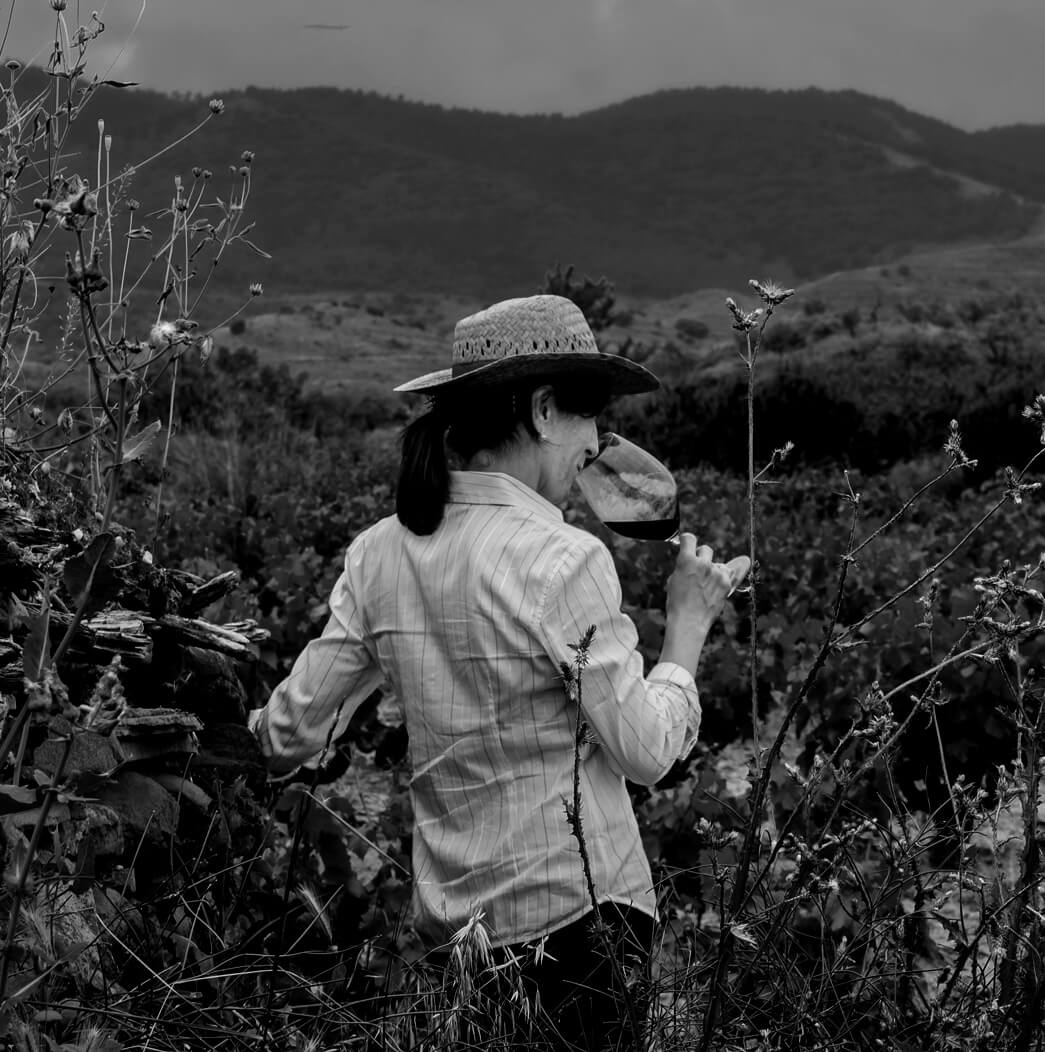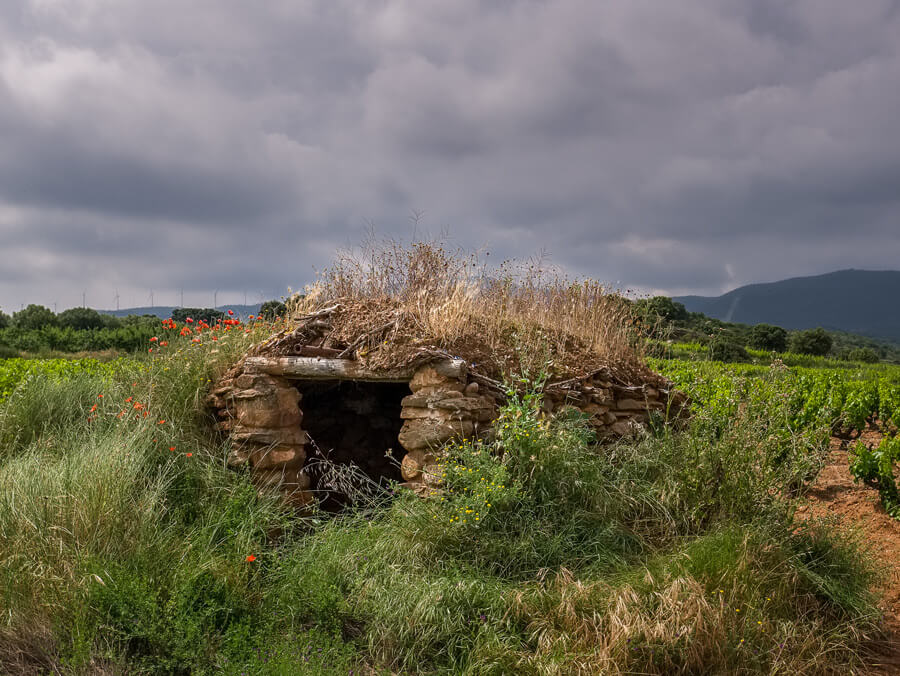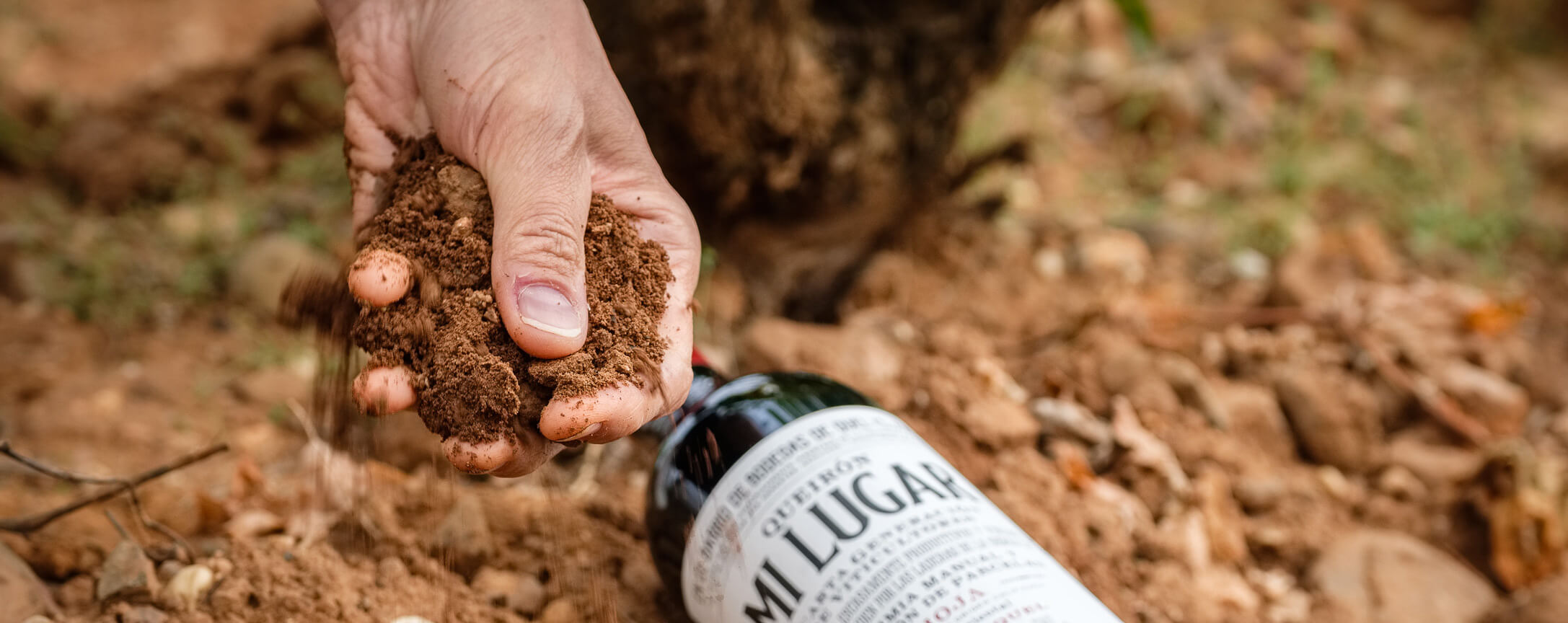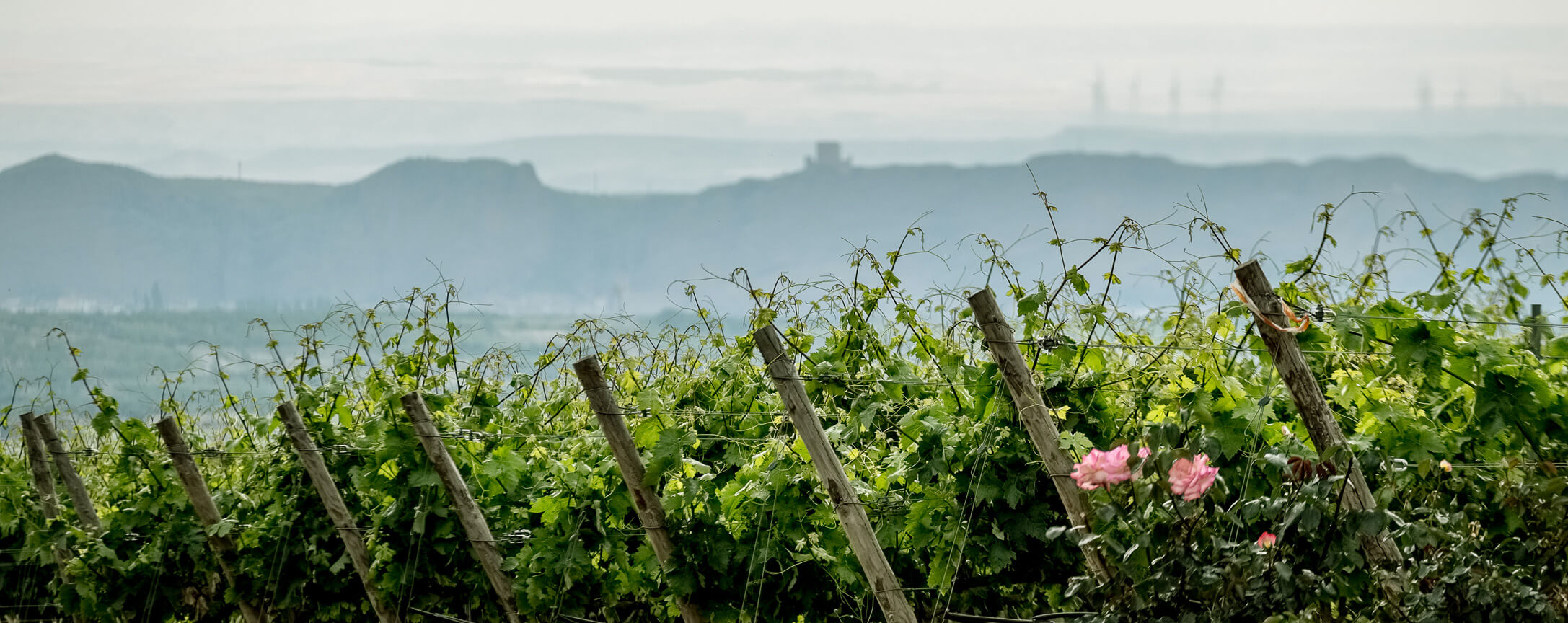The allegory
of Quel
our town
There among the golden harvest,
gently waving, Zephyr,
The shy quail continues to sing
its joyful song
‘Mi Lugar’.
The wine of the village
Mi Lugar was created as a shining tribute to the tradition which the Pérez Cuevas family has been working to restore. The wine of Quel: genuine, proud and noble comes from a selection of small plots where only the best grapes are harvested and delivered to the winery of Queirón, which represents the ninth cave in a neighborhood full of Dionysus worshippers. A structure that stands as an homage to the traditional and hardworking townsfolk of Quel, immortalized through the words of the poet Don Manuel in his poem “Mi Lugar”, or “My Place”.
Bacchus graces us
with his delights
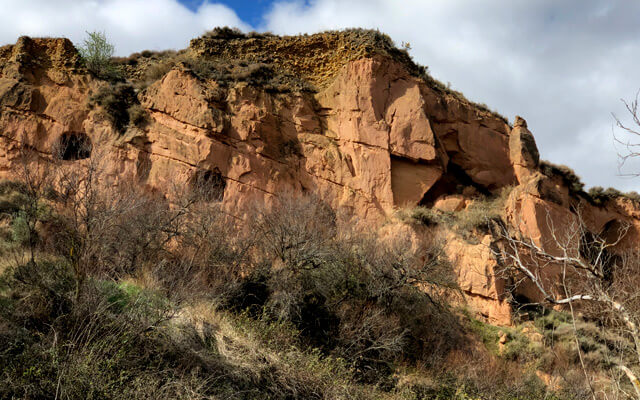
Quel is its name, full of the poor;
but replete with gifts (…)
Minerva there with her treasures and
Bacchus there with his earthly delights
‘Mi Lugar’.
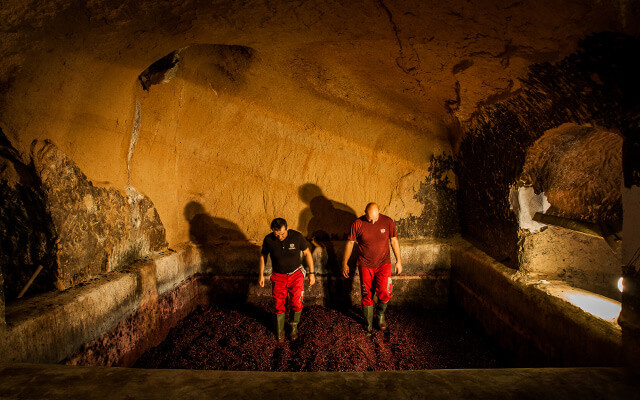
… and its
temples
Harvest 2019
A Vintage which was rated as Excellent by the DOCa Rioja Control Board, a classification which had not been granted since 2011. The amount of rainfall between the autumn of 2018 and the spring of 2019 was low, well below the average annual rainfall throughout the appellation. Even from early summer they were announcing that we could be in for an exceptional year. In addition, the months of August and September were dry, with high daytime and cold night time temperatures which allowed the grapes to be harvested in ideal conditions and with a very healthy crop.
Winemaking
Made exclusively with the best berries from each plot, there are three separate levels of selection made to achieve the quality and personality of Mi Lugar. The first selection process is made in the vineyards themselves, the second one is made when the grape bunches arrive at the winery and after destemming, and the third selection is made at the time of sorting each individual grape. Each step is carried out entirely by gravity flow, in order to take advantage of the traditional process in winemaking. From the time the grapes arrive at the winery, they are sorted by hand, and are then handled with minimal intervention and extreme care in protecting the integrity of the grapes themselves as well as the must and subsequently the wine itself from any unnecessary manipulation, such as mechanical pump overs.
A prefermentation maceration is carried out for five days. The second step is an extended maceration, which is carried out gently and in a prolonged manner (more than 18 days), with temperatures between 22 and 26oC. Malolactic fermentation takes place in French oak barrels. Another essential characteristic to Mi Lugar is the 18 months it spends in very high quality barrels, of 20 percent American oak and 80 percent French oak, each with a differing level of toast. The final process before bottling culminates in aging the wine another six months in stainless stell tank, to further develop the quality of the wine that is to be born.
vintage
Technical data
vino
de Quel
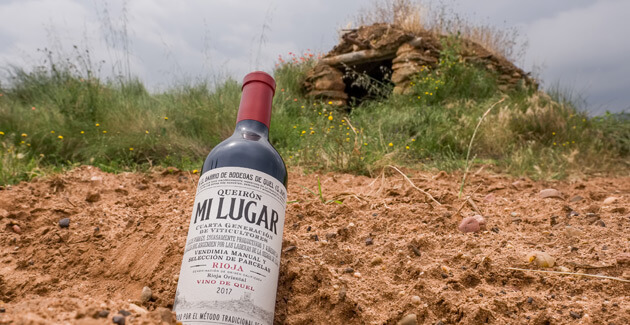
Chefe
Paniego
Sommelier at Portal del Echaurren
Ezcaray La Rioja
(two Michelin stars)
National Award of Gastronomy for the Best Head of House or
Maitre D.
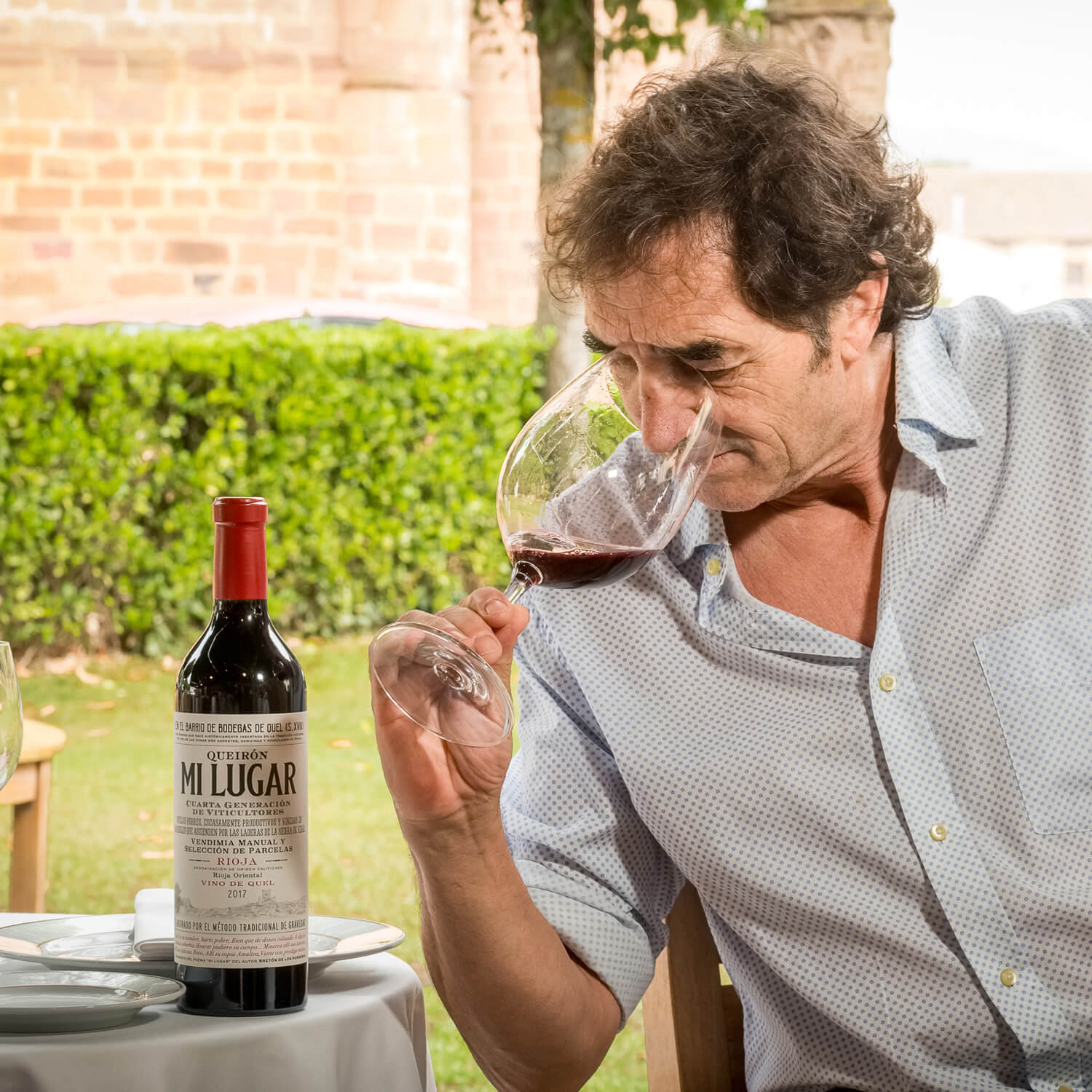
Remales
de amapolas
Mi Lugar is a promise of hope. When served in the glass, it explodes with aromas of red fruit and freshly picked cherries, has refreshing acidity and displays light toast and a touch of sali- nity that is reminiscent of of the Medi- terranean. Its lingering aromatics leave an impression of flowers, a field of ash and poppy branches. It is a wine that envelops the mouth. Fullness of flavor develops over time. We like to describe Mi Lugar as a young man full of meaning and determination. The years will certainly be its best ally. A great wine, its finish becomes silky and softens without losing its nerve. Is this the result of its soil that suffers and de- livers length in the mouth?
Mi Lugar Tempranillo Blanco
2021
inspiration
El Arca
2020
An ancestral journey
Queirón de Gabriel
2011
Gabriel´s dream
Ensayos Capitales
2018
Challenging the limits
Ensayos Capitales Nº3
2020
Asoleao
